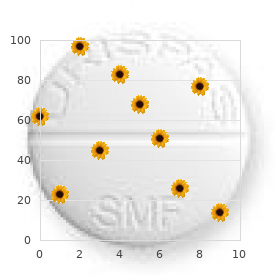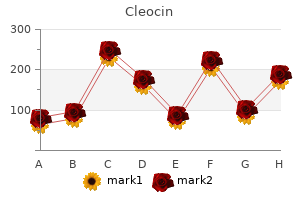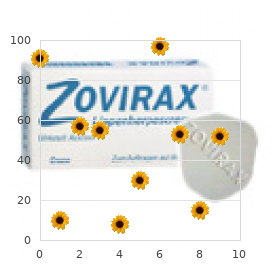Cleocin
"Discount 150 mg cleocin fast delivery, skin care 27 year old female".
By: T. Aldo, MD
Program Director, New York Institute of Technology College of Osteopathic Medicine at Arkansas State University
Amphotericin B and pentamidine are effective skin care vegetables buy 150 mg cleocin fast delivery, but toxic alternatives for those who experience failure or relapse acne 4 dpo buy generic cleocin on-line. Recombinant interferon gamma administered with pentavalent antimony has been used effectively in a limited number of persons with diffuse cutaneous leishmaniasis acne reddit buy cheap cleocin 150 mg online. Large-scale control programs have been attempted in areas where dogs are the apparent reservoir skin care 3m order cleocin overnight delivery, but their efficacy is debated. Residual insecticide spraying has been used successfully to limit disease where transmission is due to peridomestic sandflies, but it is seldom employed now because of emerging insect resistance and environmental concerns. Unfortunately, these measures are often not available for residents of endemic areas, and no vaccine is available. This is a summary of their exposures and the delay that frequently occurs in diagnosis. The epidemiologic characteristics, clinical manifestations, diagnosis, and treatment of leishmaniasis are reviewed. Visceral leishmaniasis is endemic in the Sudan, and a major epidemic has occurred there among refugees. Toxoplasma gondii is a protozoan parasite that is ubiquitous in nature and infects a variety of mammals and birds throughout the world. However, clinical and/or pathologic evidence of disease (toxoplasmosis) may occur, particularly in the immunocompromised patient, the congenitally infected fetus and child, and those in whom chorioretinitis develops during the acute acquired infection. Infection is characterized by two stages: acute (recently acquired) and chronic (latent). For information on congenital toxoplasmosis, the reader is referred to Remington and Klein (1995). There are three forms of the parasite: the tachyzoite, which is the asexual invasive form; the tissue cyst (containing bradyzoites), which persists in tissues of infected hosts during the chronic phase of the infection; and the oocyst (containing sporozoites), which is produced during the sexual cycle in the intestine of members of the cat family (the definitive host). After ingestion of tissue cysts or oocysts, bradyzoites or sporozoites, respectively, are released into the intestinal lumen, where they invade surrounding cells, become tachyzoites, and disseminate throughout the body via the blood. The tachyzoite has a crescent shape, measures approximately 3 by 7 mum, requires an intracellular habitat for survival, and can infect all mammalian cells. Continued multiplication ultimately results in destruction of the host cell and release of tachyzoites, which can then infect other cells. Tachyzoites are found in tissues during the acute stage of the infection or during reactivation of the chronic infection. Development of immunity is associated with disappearance of tachyzoites and formation of tissue cysts. Unlike tachyzoites, bradyzoites released from tissue cysts are relatively resistant to the digestive process of the gastrointestinal tract. Oocysts containing sporozoites measure 10 to 12 mum in diameter, are excreted in the feces 3 to 34 days after the cat becomes infected, and continue to be excreted for 7 to 20 days, after which excretion rarely recurs. They become infectious only after they are excreted and sporulation occurs; the duration of this process depends on environmental conditions but usually is 2 to 5 days. Thus, transmission is primarily by the oral route through ingestion of raw or undercooked meat containing T. Virulence in laboratory mice, isoenzyme pattern analysis, and restriction-fragment length polymorphisms have been used to differentiate virulent and avirulent strains of T. In the United States, there is no significant difference in prevalence of antibodies to T. Depending on geographic locale and population group, 3 to 67% of adults have serologic evidence of infection. In other parts of the world, including tropical countries and some areas of Western Europe, up to 75% of adults are seropositive. Transmission to humans occurs by ingestion of tissue cysts or oocysts, the transplacental route, blood product transfusion, solid organ transplantation (kidney, heart, or liver from a seropositive donor into a seronegative recipient), and laboratory accident. Epidemics of toxoplasmosis due to eating of undercooked meat or exposure to oocysts. In 1995, an epidemic occurred in Victoria, British Columbia, Canada, in which more than 100 persons became infected. In the United States, transmission by eating undercooked or raw meat containing tissue cysts or vegetables or other food products contaminated with oocysts appears more common than transmission by contact with cat feces, but further data are needed to verify this hypothesis.



Extracutaneous disease skin79 skin care generic cleocin 150mg mastercard, secondary to either lymphohematogenous dissemination or inhalation of organisms acne you first buy discount cleocin online, is rare skin care 9 buy genuine cleocin online. Although the organism does not appear to infect plants acne around nose buy cheap cleocin 150mg line, it may infect animals, especially cats and dogs, as well as humans, especially those who frequently handle or come in contact with mulch, sphagnum moss, hay, timber, and thorny bushes. Consequently, sporotrichosis is considered an occupational disease of certain groups, including farmers, tree nursery or forestry workers, gardeners, florists, landscapers, and carpenters. In 1988, the largest known epidemic of sporotrichosis in the United States occurred among 84 forestry workers exposed to sphagnum moss obtained from a single source. Transmission almost always results from the percutaneous inoculation of organisms. In the majority of patients with extracutaneous disease, the route of acquisition is unclear. Rarely, pulmonary sporotrichosis may result from inhalation of aerosolized conidia. Although person-to-person transmission is not known to occur, transmission from animals, especially cats and squirrels, to humans has been documented. The number of cases of cutaneous disease in males and females is similar; sex and age appear to play less of a role than does environmental exposure. In the majority of patients, clinical disease does not extend beyond the site of inoculation or the draining lymphatics. Localized disease may persist for years, and cell-mediated immunity appears to be responsible for preventing or limiting the spread to extracutaneous sites. Conversely, multiorgan disease involving skin and distant sites, such as lungs, bones, and joints, is more common in immunosuppressed hosts. The basic histopathologic pattern in cutaneous sporotrichosis is a 1871 combination of suppuration and granulomas, often accompanied by pseudoepitheliomatous hyperplasia. This pattern is not diagnostic, as it may also be seen in malignancy as well as other fungal diseases, such as blastomycosis, coccidioidomycosis, and chromomycosis. The finding of large asteroid bodies (radiate eosinophilic material surrounding fungal yeast cells) provides presumptive evidence of sporotrichosis. Two distinctive clinical forms of cutaneous and extracutaneous disease, which differ in management and prognosis, are seen. This form of sporotrichosis can be further divided into two types: plaque (or fixed) and lymphocutaneous. Plaque sporotrichosis, which is less common, consists of a single ulcerative or nodular lesion at the site of primary inoculation, usually on an exposed extremity or the face. The lesion begins as a small painless red papule, which gradually enlarges and finally ulcerates (sporotrichotic chancre). Lymphocutaneous sporotrichosis, which is the more typical type and is found in about 75% of cases, represents an extension of the primary lesion. Subcutaneous nontender nodular lesions appear proximally along thickened lymphatics over days to weeks, and they occasionally ulcerate. This type of sporotrichosis, which usually remains confined to the primary site and its regional lymphatics, may wax and wane over years if untreated. The pathogenesis of the majority of cases of extracutaneous sporotrichosis is uncertain because most cases are not accompanied by clinically apparent cutaneous disease. Although indolent monoarticular arthritis of the knees, ankles, wrists, and elbows is most frequent, osteomyelitis (especially of the tibia), tenosynovitis, and carpal tunnel syndrome have been reported. Multiarticular arthritis is more likely in compromised hosts with widespread hematogenous spread to multiple organs. This form of insidious infection occurs primarily in older male alcoholics and mimics reactivation tuberculosis. Thin-walled cavitary lesions in a single upper lobe are characteristic; bilateral fibrocavitary disease may be seen occasionally. Ocular sporotrichosis results from traumatic inoculation of the conjunctiva or cornea; endophthalmitis is unusual.

A 26-year-old woman is brought to the hospital by ambulance after an automobile accident acne 101e purchase cleocin 150mg with amex. She sustained no injuries in the collision but is adamant that she did not see the car that hit her from the side as it approached acne zones on face cleocin 150 mg without a prescription. On neurologic examination she has bilateral visual field defects affecting nearly half of her lateral vision acne medication discount cleocin uk. On further questioning about recent changes in her health acne kits discount cleocin online master card, she notes that she has not menstruated in 10 months. The organism described Listeria monocytogenes, causes meningitis and sepsis in neonates and the immunocompromised. Ingestion of poorly pasteurized milk, soft cheeses, coleslaw, and ready-to-eat turkey and pork products are implicated in the pathogenesis of listeriosis in the immunocompromised population and pregnant women. While Escherichia coli, a common gram-negative bacterial cause of neonatal meningitis, can produce urinary tract infections in both well and immunocompromised adults, the organism described in the clinical case is the gram-positive bacilli Listeria monocytogenes. Direct inoculation is a common route of transmission of infection, including gas gangrene produced by Clostridium perfringens, as well as tetanus caused by Clostridium tetani. In contrast, listeriosis in the immunocompromised is most often from ingestion of poorly pasteurized milk, soft cheeses, coleslaw, and ready-to-eat turkey and pork products. Listeria monocytogenes, a gram-positive, b-hemolytic, catalase-positive bacillus, causes meningitis and sepsis in neonates as well as the immunocompromised. While neonatal listeriosis may be contracted by passage through the birth canal, inhalation of infected amniotic fluid, or nosocomial infection, listeriosis in the immunocompromised is most often from ingestion of poorly pasteurized milk, soft cheeses, coleslaw, and ready-toeat turkey. The artery designated by the arrow "A" is the anterior cerebral artery, which supplies the medial surface of the brain, the area responsible for the contralateral leg and foot areas of the motor and sensory cortices. The artery in question does not supply the arm and hand; the middle cerebral artery does. The artery in question does not supply the arm and hand; the middle cerebral artery does so in a contralateral fashion. The artery in question does not supply the face; the middle cerebral artery does so in a contralateral fashion. The artery in question supplies the medial side of the brain responsible for contralateral motor function, not ipsilateral leg and foot motor functions. The layers of the head from superficial to deep are skin, periosteum, bone, dura mater, arachnoid, pia, and brain parenchyma. Subarachnoid hemorrhages are usually caused by rupture of congenital berry aneurysms, and less commonly from arteriovenous malformations. Berry aneurysm rupture releases blood into the subarachnoid space and covers the surface of the brain with blood. However, the blood cannot be scraped off since it is trapped under the arachnoid mater. Patients with sub- Neurology Chapter 13: Neurology Answers 349 arachnoid hemorrhages will often present with the "worst headache ever" and nuchal rigidity. An intraparenchymal hemorrhage such as those caused by chronic hypertension would not appear as blood on the surface of the brain. It would likely be deeper in the brain, commonly affecting the basal ganglia and thalamus. An intraparenchymal hemorrhage appears more like a bruise of the brain tissue and less like a frank pool of blood, as described in the vignette. The dura mater is a thick, fibrous structure of dense connective tissue without space for a significant amount of blood to pool. A subdural hemorrhage is defined as a hemorrhage under the dura mater that is caused by damage to bridging veins. When the calvarium (and its adherent dura) is removed, this space is exposed, and any blood there should be readily scraped off. Blood that cannot be scraped off must be under the arachnoid, which is under the dura. Subdural hemorrhages are commonly caused by blunt trauma, especially in the elderly, alcoholics, and children, who have atrophied or underdeveloped brains that causes extra strain on the bridging veins. An epidural hemorrhage is caused by temporoparietal bone fractures that damage the middle meningeal artery.

Syndromes
- Wine is usually 12 - 15% alcohol.
- Abnormal pressures or volumes
- Difficulty chewing or swallowing (occasionally)
- Over-the-counter and prescription pain relievers to reduce stabbing pain (neuralgia)
- Back
- Cervical arthritis or spondylosis
- asparagus
- Permanent kidney damage, with a decrease or loss of function (one kidney)
- Pulmonary flow murmurs
- Seizures

Both virulent and attenuated strains of Brucella are readily phagocytized by neutrophils after opsonization with normal human serum acne location generic 150mg cleocin with visa. Whole bacteria and extracts of Brucella species may inhibit neutrophil oxidative burst activity and degranulation skin care market best cleocin 150mg. Even in the absence of specific agglutinating antibody acne extractions buy 150mg cleocin overnight delivery, normal human serum is bactericidal for Brucella organisms; B skin care laser clinic birmingham discount cleocin 150mg overnight delivery. Specific serum agglutinating antibody has opsonic activity but does not correlate with the development of protective immunity. A role for mononuclear phagocytes and cell-mediated immunity in brucellosis has been demonstrated. Protection against Brucella infection in animals is associated with preceding infection with Listeria monocytogenes or Mycobacterium tuberculosis, both of which stimulate cell-mediated immune mechanisms. Skin testing with Brucella proteins elicits a typical delayed hypersensitivity response in infected individuals. In some cases of chronic brucellosis, depressed proliferative responses to classic T-cell mitogens or to Brucella antigen occur. Clinically, human brucellosis may be conveniently divided into subclinical illness, acute/subacute disease, localized disease and complications, relapsing infection, and chronic disease (Table 356-1). Deleted only by serologic testing, asymptomatic or clinically unrecognized human brucellosis often occurs in high-risk groups, including slaughterhouse workers, farmers, and veterinarians. More than 50% of abattoir workers and up to 33% of veterinarians have high anti- Brucella antibody titers but no history of recognized clinical infection. After an incubation period of several weeks or months, acute brucellosis may occur as a mild, transient illness (with B. Approximately 50% of patients have an abrupt onset over days, whereas the remainder have an insidious onset over weeks. More than 90% of patients experience malaise, chills, sweats, fatigue, and weakness. Fewer patients complain of arthralgias, cough, testicular pain, dysuria, ocular pain, or visual blurring. Splenomegaly is present in 10 to 15%, lymphadenopathy occurs in up to 14% (axillary, cervical, and supraclavicular locations are most frequent, related to hand-wound or oropharyngeal routes of infection); hepatomegaly is less frequent. Other laboratory findings in acute or subacute disease may include mild anemia, lymphopenia or neutropenia (especially with bacteremia), lymphocytosis, thrombocytopenia, or (rarely) pancytopenia. The majority of infected individuals recover completely without sequelae if the diagnosis is appropriately made and prompt therapy is initiated. Localized complications most often appear in association with a more chronic course of illness, although complications may occur with acute disease due to B. This probably results from the intracellular location of the organisms, which protects the bacteria from certain antibiotics and host defense mechanisms. Relapses occur most frequently within months after initial infection but may occur as long as 2 years after apparently successful treatment. Relapsing infection is difficult to distinguish from reinfection in high-risk groups with continued exposure. Recent studies have shown that relapses are associated with inappropriate or insufficient antimicrobial therapy, positive blood cultures on initial presentation, and an acute onset of disease. A majority of patients classified as having chronic brucellosis really have persistent disease caused by inadequate treatment of the initial episode, or they have focal disease in bone, liver, or spleen. About 20% of patients diagnosed as having chronic brucellosis complain of persistent fatigue, malaise, and depression; in many aspects this condition resembles the chronic fatigue syndrome. These symptoms frequently are not associated with clinical, microbiologic, or serologic evidence of active infection. The most conclusive means of establishing the diagnosis of brucellosis is by positive cultures from normally sterile body fluids or tissues. The culture of Brucella organisms is potentially hazardous to laboratory personnel. In acute brucellosis, positive blood cultures are obtained in 10 to 30% of cases (as high as 85% with B. Blood cultures processed in radiometric detection or isolator systems may yield positive cultures in less than 10 days. A presumptive case is one in which the agglutination titer is positive (1:160) in single or serial specimens, with symptoms consistent with brucellosis.
Order cleocin with amex. MY ADDICTION??? (plus my skin care routine).

